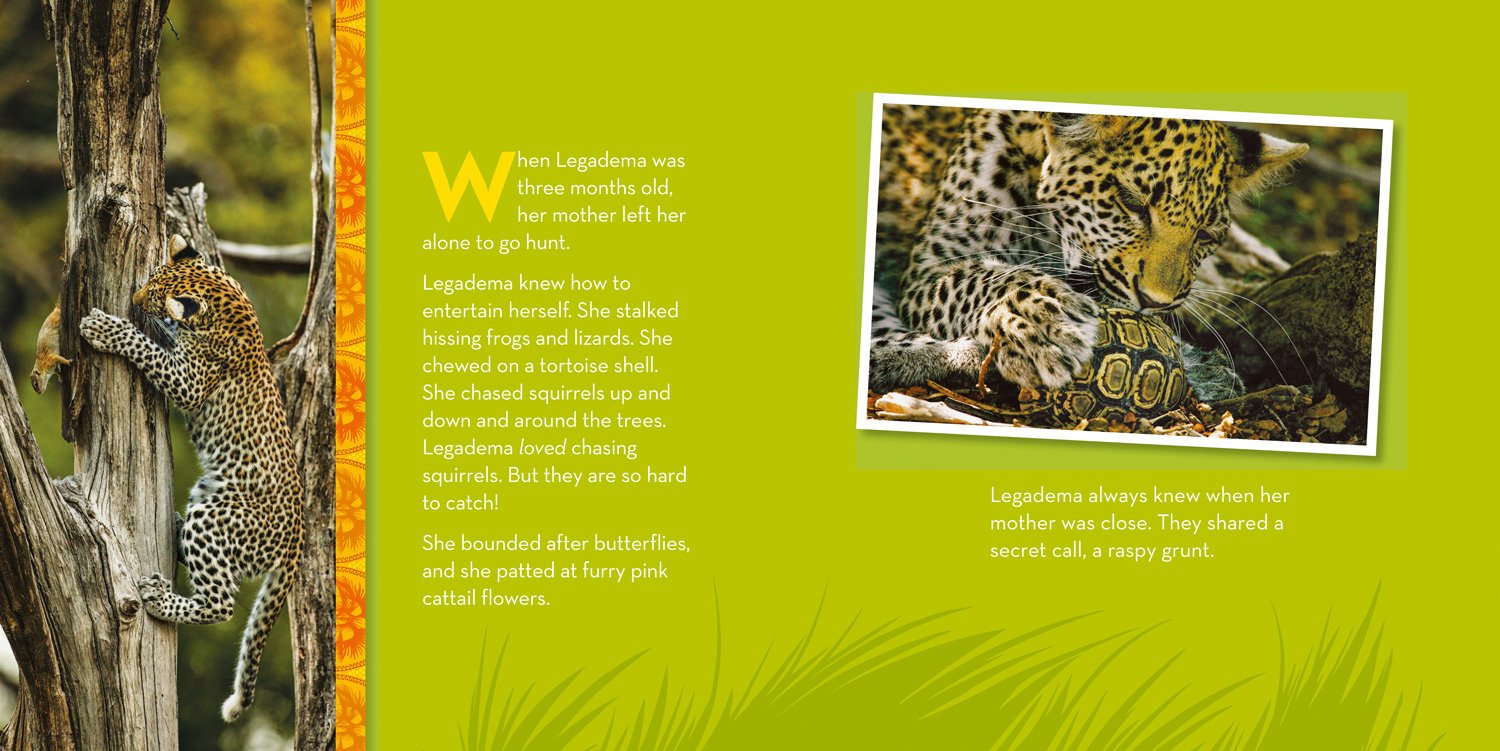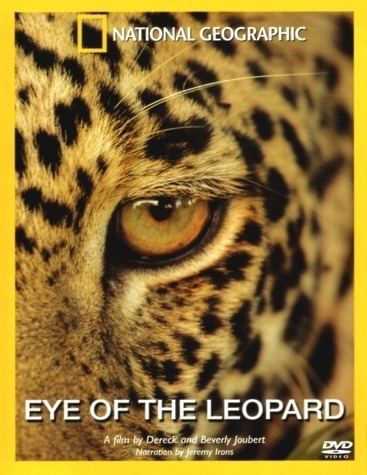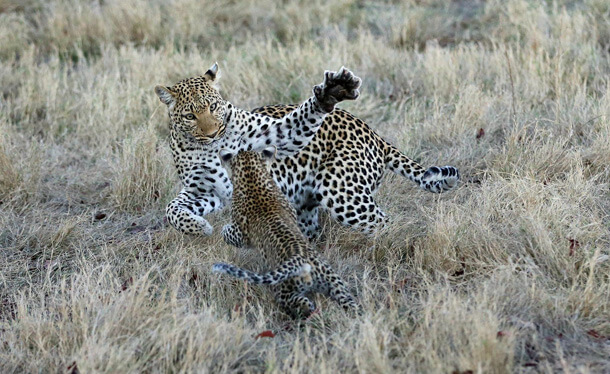Legadema
The story of a leopard
Legadema
Legadema (whose name means Lightning), the leopard star of the National Geographic documentary Eye of the Leopard, is arguably Mombo's – and Botswana's – most well-known feline, yet in her 11 or so years she has successfully raised just two cubs to maturity (Pula – Rain – and Maru – Cloud – from the same litter). Her latest cub – could this be her last? – is a feisty character who is now nearly five months old.
Colin Bell, founder of Wilderness Safaris in Botswana, was fortunate to be at the extraordinary Mombo Camp a few weeks back just after the first rains, which in turn induced the plentiful impala herds to drop their lambs.
Colin picks up the story: “When we found Legedema, she had stashed four lamb carcasses high up and out of trouble in the thickest part of the tree resulting in the coolest shade. Mother and cub had the most extraordinary energy levels from their ample protein supply of ‘cured’ meat. We watched them for close on 18 hours over a period of four days with only an hour or so of resting in between. Most of their awake time was spent on the ground cavorting with each other and their food. At one stage, Legadema ‘cheetah charged’ a passing impala herd some 75 metres away. There was no careful calculated stalk, no camouflaged intent, no slinking through the grasses – just one full-on, all-out sprint with her youngster doing his best to try and keep up, to no avail. Legedema then dutifully returned to their pantry with yet another lamb hanging limp in her mouth and her cub’s eyes glowing with excitement.” While Pula has been seen mating on numerous occasions with Blue Eyes, the dominant male in the area, she has also not yet successfully raised any young. Happily Maru has though, and her cub Phefo – Wind – who is now going on for 18 months old is often seen around Stompie’s Road on the Concession.Courtesy: Wilderness Blogger Dec 2014
LEGADEMA LOSES CUB (a follow up story)
At the end of last month, Mombo guides found Legadema at the Broken Baobab. This enormous tree has a large hollow at it’s centre, which is one of her favourite hiding places. As they watched her climb into the hollow, the telltale sound of tiny cubs mewling emanated from within.
A few days later, we tracked Legadema over an afternoon, hunting in the middle of the day, until she unexpectedly led us to her new den site on Limpy’s Island. Perhaps the constant passage of hyaenas and baboons past the Broken Baobab had prompted this move, and she had chosen a new place of safety for her little ones. The new den site was deep below a dense woolly caper bush, in an open, grassy plain, and as we approached, we could once again hear the mewling of at least two cubs. We then left the area, to give her the peace she needed. Two days later, we had an amazing sighting with her in the forest close by, as she defended her kill from three young male lions from the Mporota Pride, and we were sure that night she would return to her den to suckle. The following morning, we found her once again in the forest of Limpy’s, but behaving strangely- moving around and scent-marking, close to the caper-bush. The reason for this became apparent when we sighted the Serondela male leopard on the prowl. She was obviously attempting to distract him from his intentions, which were soon to become apparent. The male disappeared south into the forest, while Legadema continued west, still trying to draw as much attention to herself as possible. While the other guides remained with Legadema, I went in search of the male. I found him deep in a thickly-vegetated corner of Limpy’s, at the base of a large ebony tree. He jumped up into the tree and disappeared for a moment, before emerging again with a mewling leopard cub in his mouth. He moved deep into a fever-berry thicket before lying down and playing with the cub in an almost intimate, affectionate fashion- it was a very strange moment, an encounter with a side of nature not many people have witnessed- what appeared to be a gentle, tender encounter, was in fact far more sinister than that it appeared. This went on for about a half-hour, before the males attentions appeared far too intense, his licking far too rough, his eyes darting around the watching, silent forest. He was eating the cub. This was an incredibly intense thing to watch; to be a dispassionate observer of a behaviour that few have seen- the urge to intervene crossed my mind, but the futility of such actions and our own anthropocentric, sentimental views of nature quickly made me take up my camera and just document what I was seeing and let nature take its course. After a few minutes that seemed to go on forever, the leopard got up and moved away, prowling around, looking, perhaps, for the other cub. I got out of the vehicle and looked at the spot where he had been- not a trace of what had recently happened remained- not a drop of blood, a wisp of fur, nothing. The leopard, who has now been named Mmolai (killer) then disappeared in to the forest once more, and I left the area. A few hours later, another guide told me he had seen Legadema a considerable distance away from the scene, carrying a cub, removing it from danger. The future of this little one remains bleak with Mmolai on the scene, as he will kill any cubs he encounters in his newly-taken territory, but we remain in hope.Courtesy: Ryan Green at Africa Geographic April 2013
The Eye of the Leopard by Derek & Beverley Joubert:
In June 2003 we followed a leopard to a fallen tree and, after a while, noticed a tiny movement in the branches. An eight-day-old cub, still mostly sightless, stumbled out into the sunlight, starting a full and adventurous life — and a journey for Beverly and me that would end up being over four years wandering in the footsteps of this little leopard. She took us on a journey that daily exposed us to the secret lives of leopards and eventually led to us forming the Big Cats Initiative with the National Geographic Society because she so touched our lives. We understood through this process that she and the last remaining 50,000 leopards were voiceless in their own struggle for survival of their species, and that through the Big Cats Initiative we needed to become that voice.
For us this period of our lives was pivotal in that it turned us from filmmakers and conservationists alone to becoming ambassadors and advocates with a sense of urgency.
We made two films from our relationship with the leopard we called Legadema. She became a household name. Shops are named after her, people in the streets know her name, and at one of Beverly’s exhibitions in London people braved the rain and buses to stand and stare into her eyes. She inspired poetry, and solace as people claimed that just watching the film or flipping through the book gave them calm against their fears of advanced cancer. Her eyes have an enticing, seductive, healing effect on all of us. We completed the book, Eye of the Leopard, and it has been a bestseller. Thousands of tourists to Botswana visited her, and many came just to find her and stare into those eyes. We continued our work in the Selinda area with other leopards, but Legadema stole our hearts. We kept up with her, sometimes remotely, for all those years. But a few months ago the reports of sightings of Legadema dwindled. I am reminded of a line of poetry she inspired me to write because now it is apt once again: I SEE YOUR WILD EYES TURN SOFT WITH OUR REFLECTION, A CERTAIN KNOWING. THANK YOU SILENTLY, PRIVATELY PERHAPS AND GO. YOU HAVE THINGS TO DO. We do that again now; “thank you silently” and “let you go.” You were a queen of leopards, an inspiration to us all. We pledge here once again to protect you fiercely, as you would your cubs.Courtesy: National Geographic Big Cats Initiative 2016 - See more on Wikipedia
ARTICLES OF INTEREST:
Legadema on walkway at Mombo (video).
Eye of the Leopard trailer (video).
Go back to: Families & Species Ambassadors


